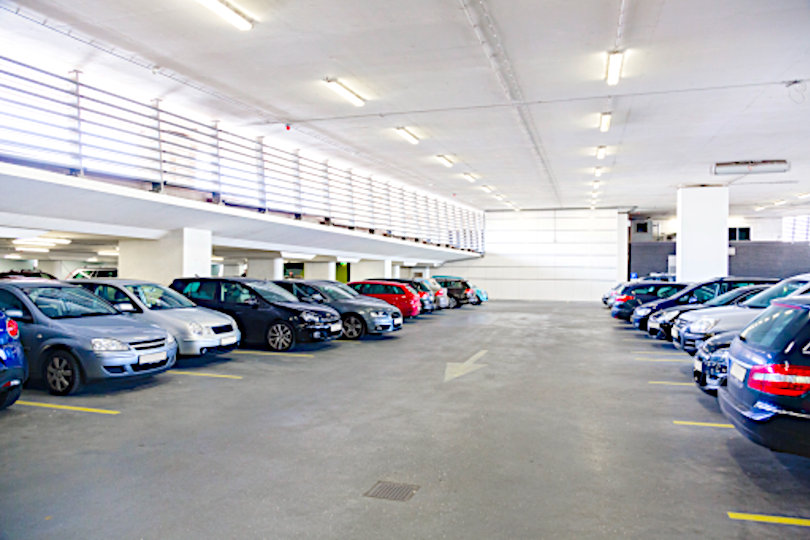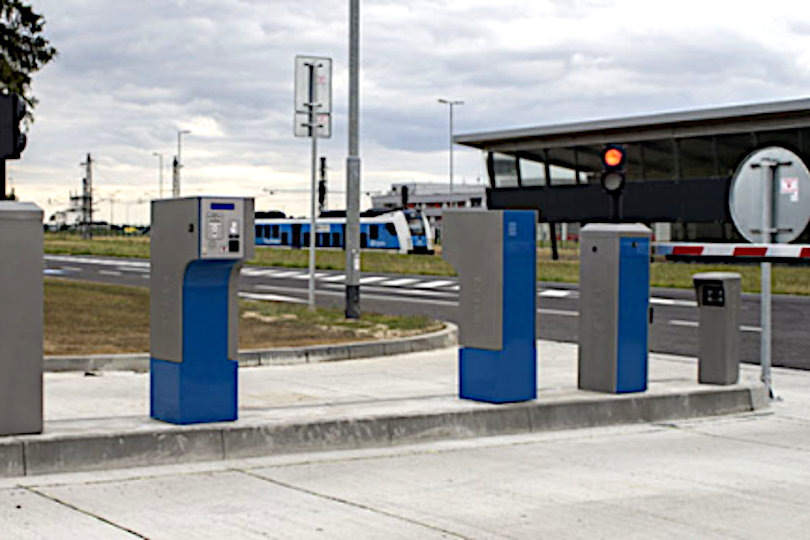As more people populate the world, many choose a city or suburban lifestyle. More often than not, they own one or several vehicles. These facts point to ever scarcer parking space for all those cars, trucks, and SUVs. So large parking lots and more high-rise parking garages will be increasingly common sights.
Managing a garage with a capacity of several hundred vehicles is a complex challenge. As the capacities of these facilities increase, so do the complexity of the challenges in managing them. With this trend showing every sign of continuing, new technologies will be necessary to manage parking facilities efficiently.

Technological development always surprises us, but we’ll be bold and hazard a few guesses about how smart parking solutions might develop. It seems pretty certain that Automatic Number Plate Recognition (ANPR) cameras will continue to have an essential role in these systems for the foreseeable future.
Adaptive Recognition has led the plate recognition industry since 1991, and their products will surely figure in this discussion.
Vehicle-Tracking Sensors
More and more, IoT (Internet of Things) devices appear in every aspect of life. Until now, IoT-based vehicle tracking systems have been employed chiefly by large fleet managers. Like most technologies, this development seems likely to filter down, ultimately reaching individual cars.
GPS (Global Positioning System) and OBD (Onboard Diagnostics) have already been common or even universal in new cars for 10+ years. Using inputs from those systems to allocate parking space and direct vehicles to available spaces in a complex garage seems like a natural progression of the capabilities of GPS and OBD. Linking the tracking data to ANPR cameras in the garage, which can assist in monitoring the entire facility, is just, as one would say, the icing on the cake.
As 5G data systems develop, the capacity to manage and rapidly transmit vast amounts of data becomes a reality and will enable vehicle-tracking systems.
Automatic Vehicle- and Space-Counting Systems
A smart parking solution could use a counting system that detects when each vehicle enters and leaves the garage and, of course, “knows” its exact capacity. Such a system can determine when the garage is full or disclose to users the precise number of spaces remaining open.
Coupled with the ANPR-assisted tracking system described earlier, the system can pinpoint the exact location of each available space and direct a vehicle to it.
Automated Space Utilization
A smart parking solution using automation to move cars around in a garage can make the best use of the space in the facility. Some spaces will accommodate only a small car. Moving coupes and sports cars to those small spaces leave room for larger sedans, SUVs, vans, and pickup trucks in larger spaces.
In the most sophisticated application of this smart parking solution, the entire parking process can happen with no human intervention, except perhaps one operator to instruct arriving drivers and monitor the system.
The arriving drivers would leave their cars at the garage entrance, where the automatic system would move them to the space best suited to the particular vehicle.

Benefits of the “New” Smart Parking Solutions
There are countless benefits to advanced parking solutions, but some of the more important ones are as follows:
- These systems will generate data that can enable trend analysis and prediction of future requirements.
- Using the automatic vehicle movement system, a smart parking solution could eliminate damage from vehicles maneuvering in close quarters.
- Since members of the public never enter the garage, customers can feel secure that their vehicles and belongings are safe.
- Engine emissions from vehicles searching for a parking space are eliminated.
- Light and ventilation requirements are dramatically reduced.
- Identification and location of vehicles through the ANPR and IoT systems we mentioned earlier can assist in city-wide monitoring and management of traffic, on-street parking, and automatic issuance of violation notices.
- Travelers can check the available parking space at their destination and make reservations in advance, simplifying travel planning.
- Where parking areas are metered, drivers can see when their time is about to lapse and extend their parking time via their smartphones.
- Space utilization and allocation in individual parking facilities become much more efficient city-wide. As cities get more crowded, these benefits will only increase.
- Smart parking solutions utilizing IoT technology in conjunction with tried and true ANPR systems enable drivers, parking facility operators, city managers, and law enforcement authorities to communicate. Notification of changes, asking and answering questions, etc., keep everybody in the loop and assist them in making the most efficient decisions at every turn.
Existing ANPR technology, which will continue to develop in conjunction with GPS and emerging IoT applications, will transform smart parking solutions. Adaptive Recognition has been a leader in the plate-recognition business since 1991. The company’s cameras and ANPR technology enabled by them improve the efficiency of parking space use. You can find out more by visiting Adaptive Recognition’s website and discussing your unique situation with their experts.

And what does the future hold? It’s safe to say that better use of technology that already exists in many, if not most, vehicles will surely continue.
With these advances, in combination with existing parking technology, parking garage operators and city management can work together with drivers and law enforcement authorities to improve the efficiency of the limited space available in cities.







